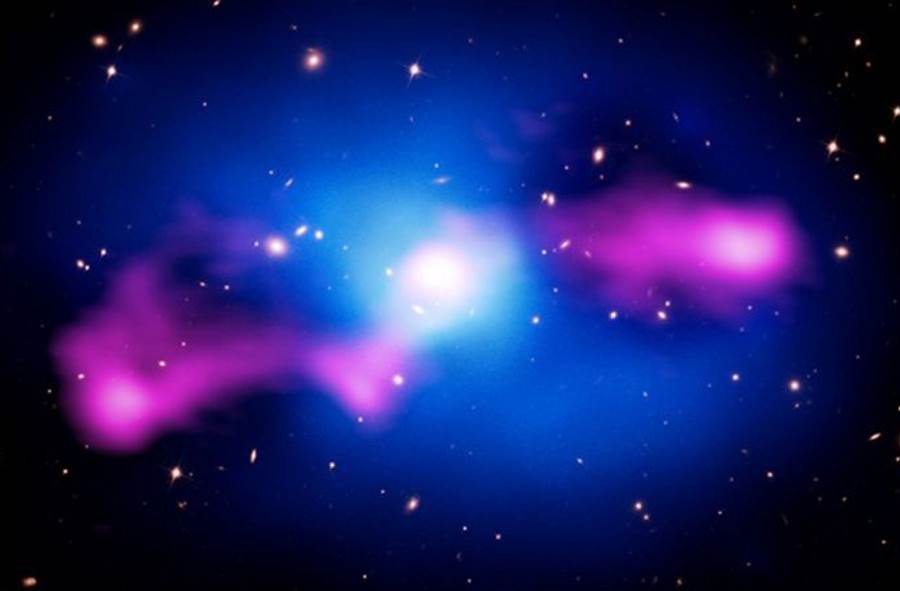
The blast is generated by the largest black hole in the known universe, a gravitational monster over 10 billion times the mass of our sun. Astronomers calculate this behemoth has consumed almost 600 million times the mass of the sun in order to generate such a powerful explosion.
To create the image, X-ray and radio wave data was combined with optical images from the Hubble Space Telescope. The X-rays are shown in blue and were detected by NASA's Chandra X-Ray Observatory. They indicate the hot gas that makes up most of the mass of this enormous galaxy cluster.
Shown in pink are vast cavities each over 600,000 light-years in diameter, blasted out by powerful supersonic jets from the gargantuan galaxy at the very heart of this image. These cavities have displaced a trillion suns' worth of mass and have been filled with magnetized, extremely high-energy electrons emitting radio waves, which were detected by the Very Large Array radio telescope.
Most, if not all, galaxies are thought to contain supermassive black holes at their centers. Astronomers are still trying to determine which forms first — the black hole, or the galaxy around it.
Galaxy cluster MS 0735.6+7421 is located 2.6 billion light-years away in the constellation Camelopardalis, the Giraffe.



Which comes first? Chicken or the egg? or both simultaneously of course, as one cannot exist without the other. Isn't it like asking which came first: the beginning or the end? Aren't they really the same?